Sometimes plants have a cute name and people think they can keep them anywhere. Well, that is not the case with the Panda Plant. It is a cute and distinctive looking plant, but it is also one that needs to be kept in a safe place, away from small children or pets.
Of course, with any responsible plant owner, you will need to do your research before buying any kind of plant. Know where it can be grown, if it is toxic or not, if your space is large enough and many other types of particulars. Let’s take a look at the Panda Plant and see what we can learn.
Table of Contents
Panda Plant (Kalanchoe Tomentosa) Background and History
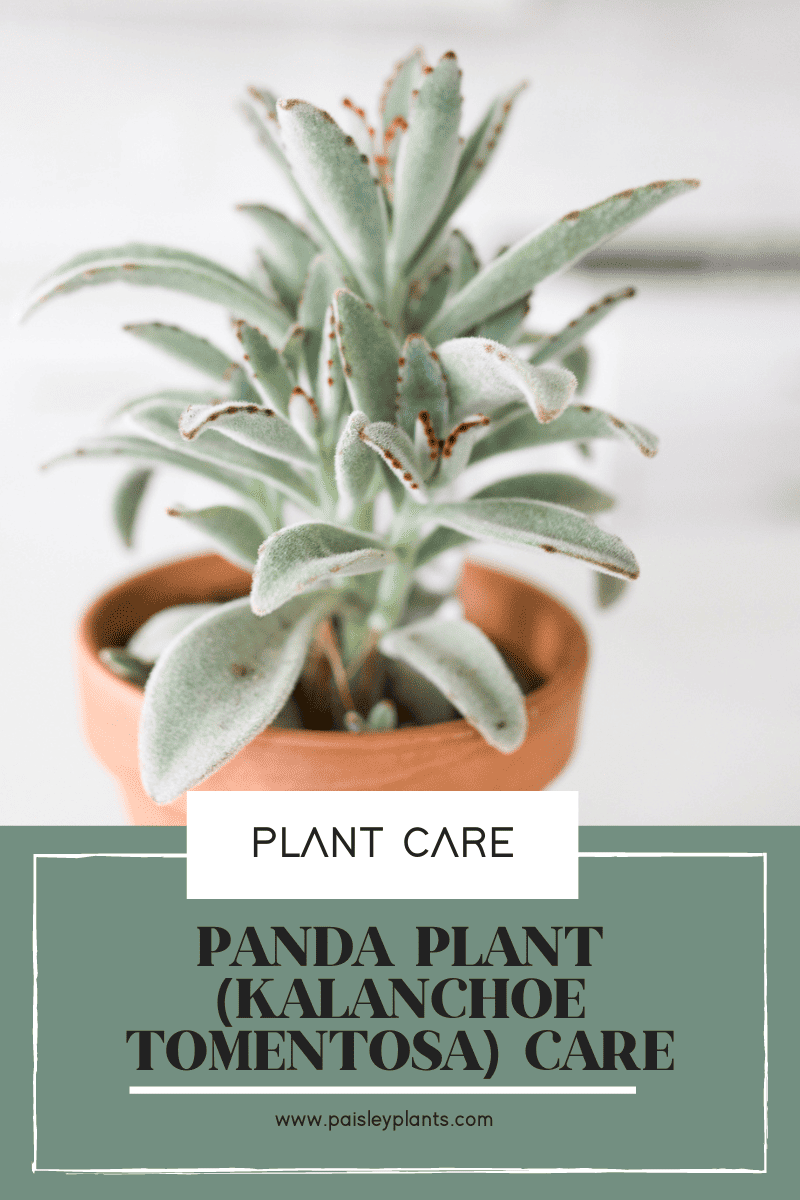
These velvety leaved plants are native to and grow wild on the island of Madagascar. The scientific name “Kalanchoe tomentosa” means “covered with fine hairs.” You can see why when you look at a Panda Plant. They look very much like the fur of a panda bear.
Varieties
I’m going to mention 10 different types of Panda Succulents here, just to give you an idea of the variety there are in the world.
- The most common is the Kalanchoe tomentosa succulent or regular Panda Plant Succulent.
- There is a Kalanchoe tomentosa Nigra, which is a smaller version of the Panda Plant. It is also a common variety.
- The Kalanchoe tomentosa “Golden Girl” has a beautiful golden yellow color foliage.
- The Kalanchoe tomentosa “Chocolate Soldier” has striking dark chocolate brown or deep maroon foliage, thus the name.
- There is also a Kalanchoe tomentosa “Cinnamon,” which has a very similar, but much darker color than the Chocolate Soldier variety.
- Then we have the Kalanchoe tomentosa “Teddy Bear.” It is known for its adorable and cuddly appearance which looks like a teddy bear’s soft and furry coat.
- Another variety is a Kalanchoe beharensis “Fang,” which is named because of its distinctive shaped underside on its leaves resembling a sharp fang.
- There is also a Kalanchoe “Roseleaf” that has sturdy, upright stems which are thick and fleshy. They have a brownish hue on the upper surface with brown markings.
- The last two of the ten are the Kalanchoe eriophylla “Snow White” which has small oval leaves with a velvety texture. They are a silvery white or grayish color.
- And then, last but not least, there is the Kalanchoe Millotii or also known as Thousand Panda Plant. The leaves resemble maple leaves, but are soft and velvety.
Common Names
There are many other names for the Panda Plant, which include White Lady, Donkey Ears, Chocolate Soldiers, Pussy Ears, Cat Ears, and Plush Plant.
Toxicity
I have read both sides of the toxicity argument for the Panda Plant. Some people say it is definitely toxic and others say it is definitely not toxic. The bottom line with this plant is to always go for safety. Keep your plant on a high shelf or in a hanging planter to prevent any accidents with small children or pets. This is the best way to keep either of them from harm.
Panda Plant (Kalanchoe Tomentosa) Care Tips

The Panda Plant is a fairly low maintenance plant. Here’s how to care for it.
Water Requirements
Due to the fact that this is a drought tolerant succulent plant, you will want to be sure you do not overwater your plant. Too much water can cause root rot. Keep a regular watering schedule and water it only when the soil is dry to the touch.
Light Requirements
Your Panda Plant will thrive in good light conditions. This means it can tolerate at least six hours of sunlight per day. It can withstand even longer periods of light, so is a good plant to keep near a window.
You can also place it outdoors during the summer months, but be sure the temperatures don’t drop below 65 degrees F. You should remember, however, that the leaves can burn if given too much direct bright sunlight. Bright, indirect sunlight is best tolerated by these plants.
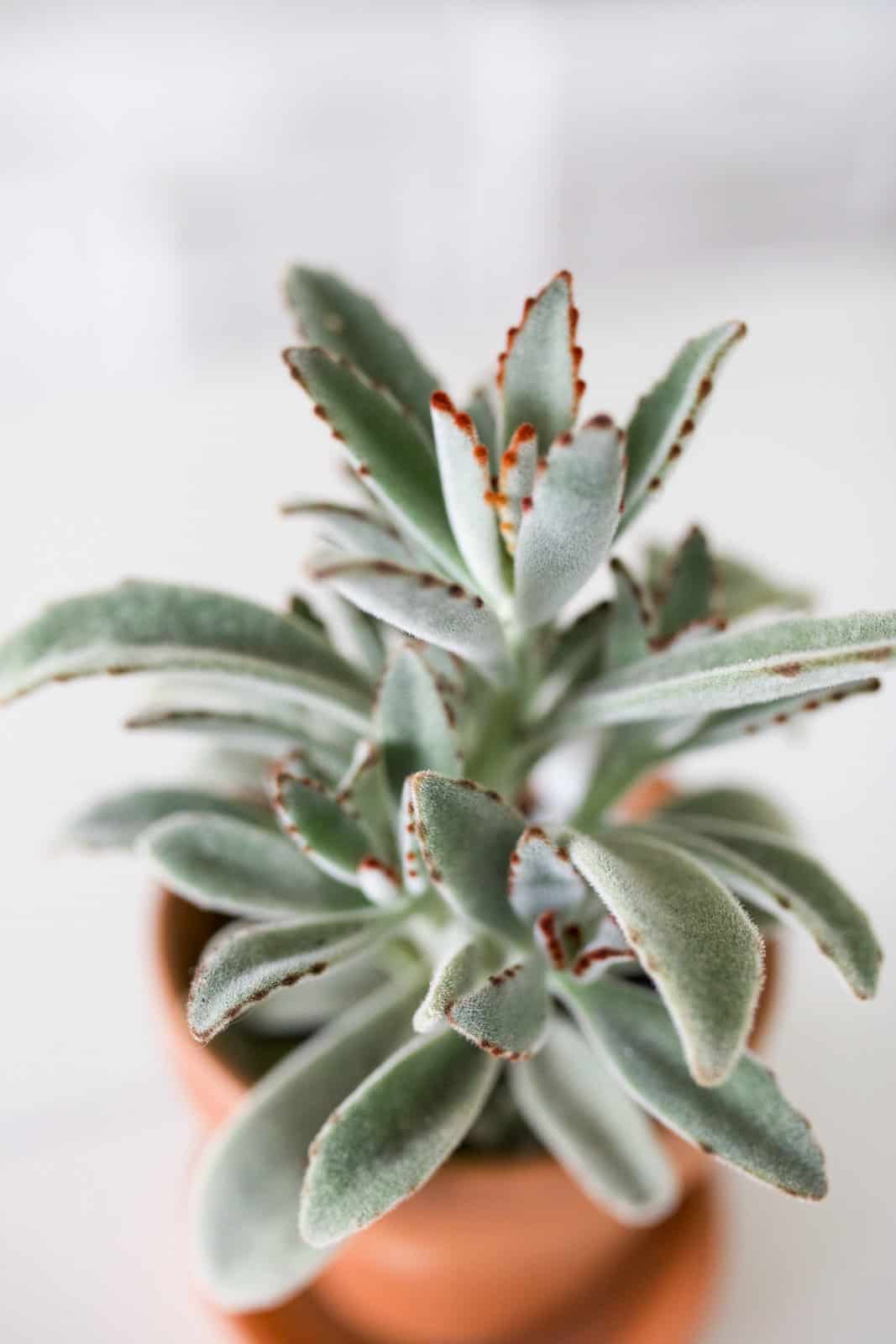
Soil Requirements
Your Panda Plant should be planted in a fast draining type of soil because it is a succulent. Be sure there is at least one good drainage hole in the bottom of the pot so excess water can get out. Your plant does not like to sit in soggy soil. Be sure to allow it to dry out between waterings.
You can buy pre-made cactus or succulent soil or mix your own. Or you can use a succulent mix also. You can also mix perlite and/or sand into the cactus soil also to make it faster draining.
Fertilizer Requirements
Because it is a plant that survives tough conditions in its natural habitat, it typically doesn’t need as much fertilizing. Using a diluted liquid fertilizer or a slow release type of fertilizer during the spring through the summer months should be sufficient. Follow package directions when mixing it, if necessary.
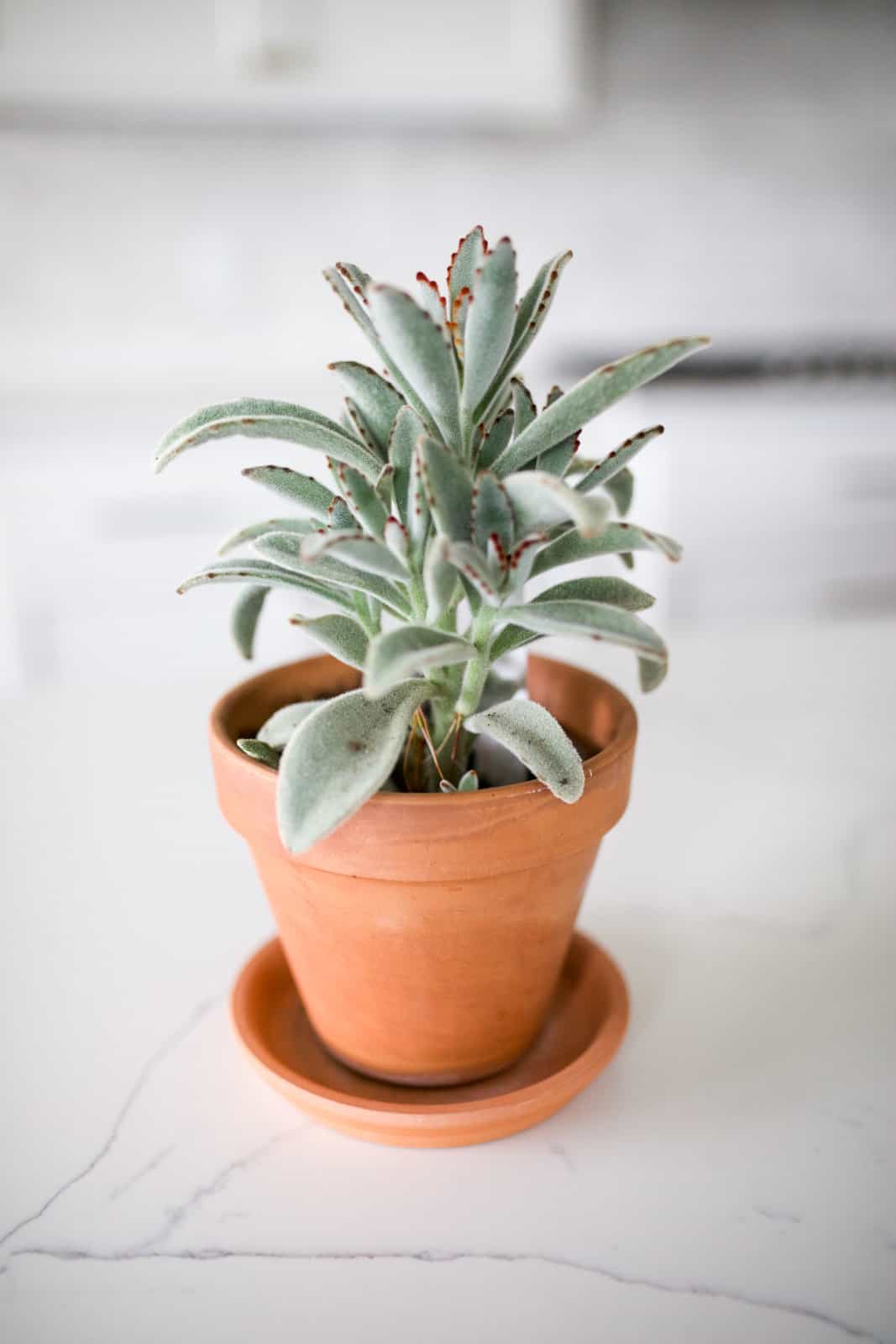
Temperature and Humidity Requirements
The optimum temperature for your Panda Plant is between 60 and 75 degrees F. Also, remember to keep your plant away from any heat or air conditioning vents as temperature changes can cause damage to the plant. Constant temperatures are best.
As far as humidity goes, they don’t require much over what is normal for most home environments. If you have normal ranges of humidity in your home, then you won’t need to worry about adding humidity. If your home is extra dry, however, you should think about using a humidifier or pebble tray for your plant.

Pest and Diseases
Mealybugs, aphids and brown scale are the most common pests for the Panda Plant. If you spot any of these pests, the first thing to do is isolate your plant from others in your collection. After you do this, you should treat your plant with rubbing alcohol on a cotton swab. This will remove the mealybugs or aphids, but you will have to scrape off the brown scale.
Pruning and Repotting
If you decide to prune your Panda Plant, you will be accomplishing two things. One is that you will be keeping your plant healthy and the other is that you may end up with bonus baby plants! Prune during the late winter to early spring for healthy growth and recovery for your plant.
As far as repotting your Panda Plant, this should only be necessary every year or two. Be sure to use a pot that is at least one to two inches larger than the current one. Also, using fresh soil will help give your plant the necessary nutrients it has lost in the old soil, which should always be replaced when repotting.
Common Problems
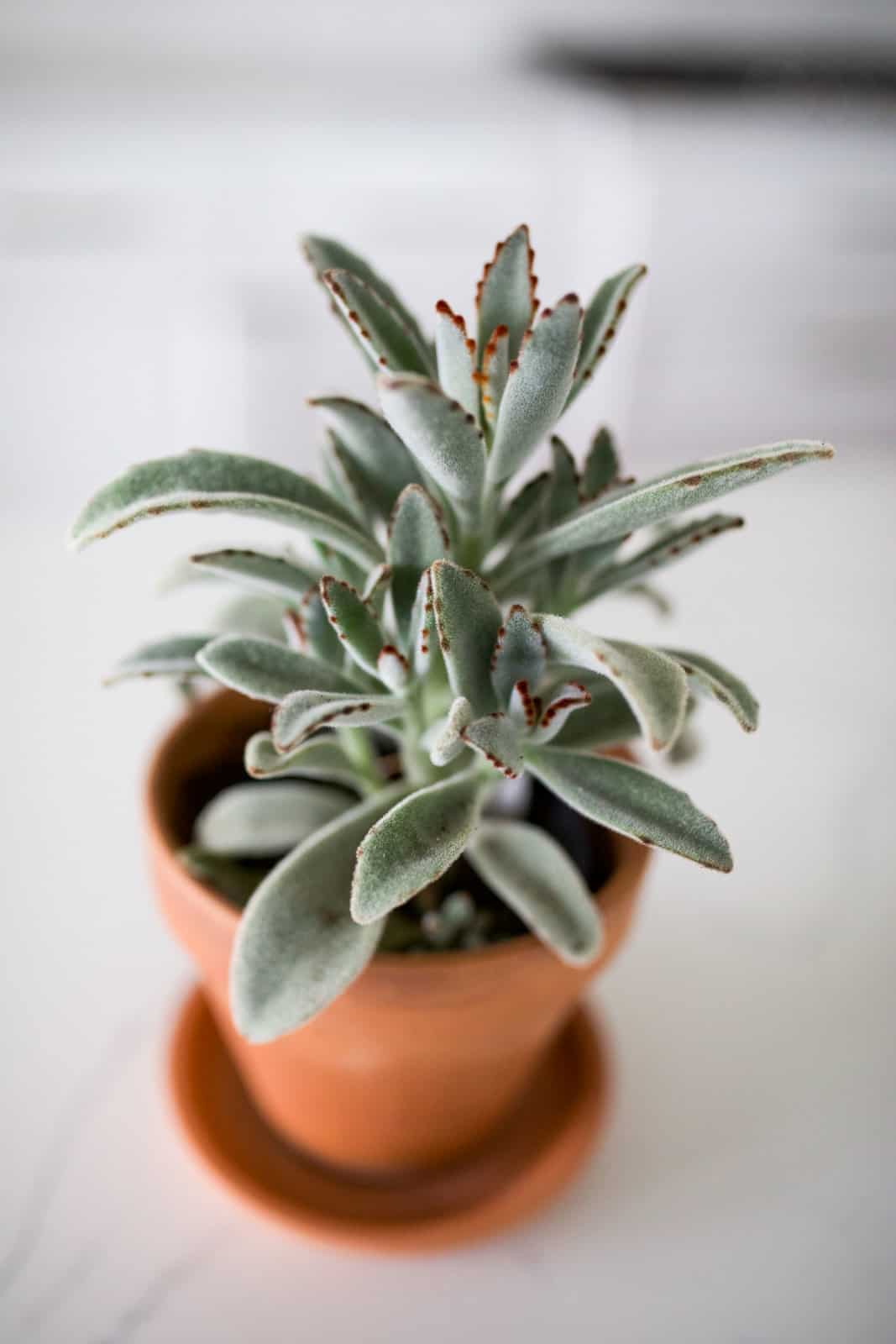
Leaf Drop
This can be a result of stress from overwatering, underwatering, or a lack of light for your plant. You will need to adjust the watering schedule to see if you have been over or under watering it. Be sure it is not left sitting in soggy soil. Also, you may need to change the location where you keep your plant to give it a better light source.
Root Rot
Panda Plants are susceptible to root rot if you overwater them. This will ultimately kill your plant if you don’t discover it soon enough or if you don’t repot the plant after discovering it. You will need to take the plant out of its pot, check the roots to see if they are mushy or black, then deal with it.
If they are too mushy or black, the plant may not be able to be saved. However, if you are able to cut back the rotten part of the roots and keep the healthy remainder of the roots, you can repot it and hopefully your plant will start growing well again.
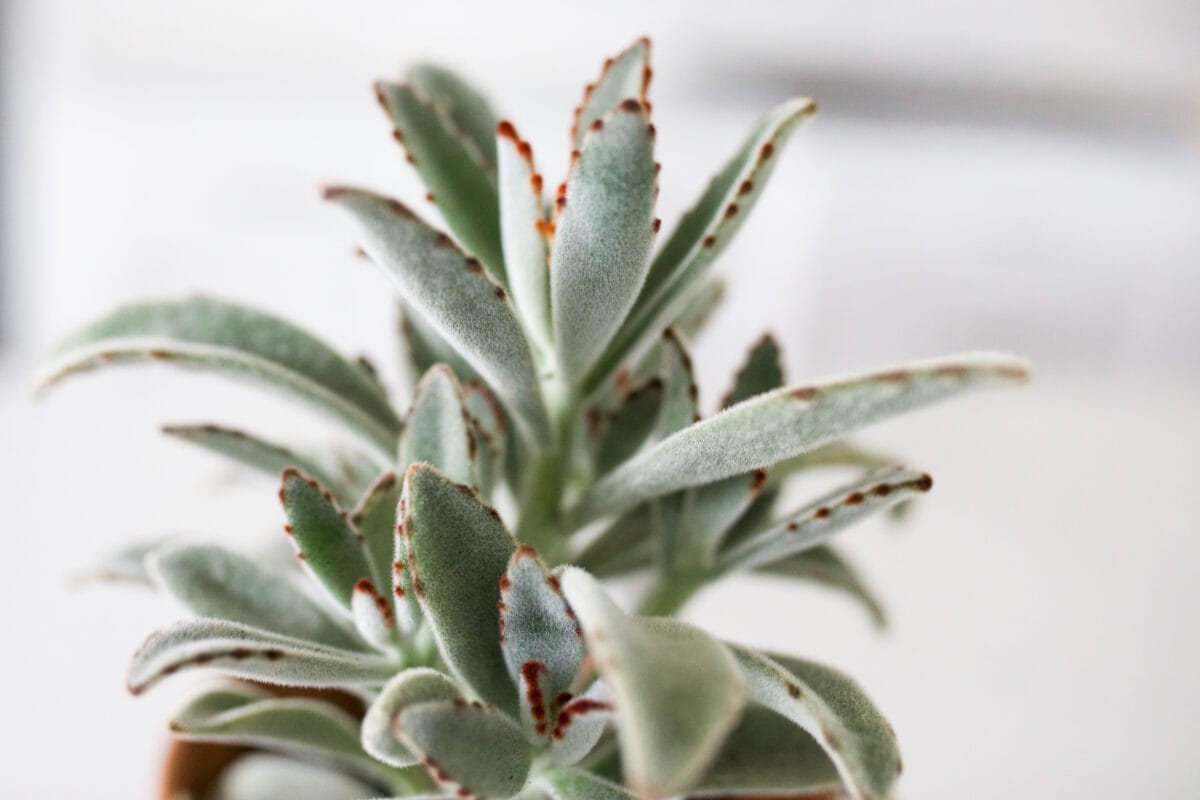
My Plant is Falling Over
Your Panda Plant will normally grow in a compact pattern and not be leggy or elongated. If this does happen, however, it could be a sign that the light source is not right.
The stems will stretch to reach the light and this will weaken them and they could start falling over or bending. Move your plant to a better light source and this should help alleviate the problem.
FAQs
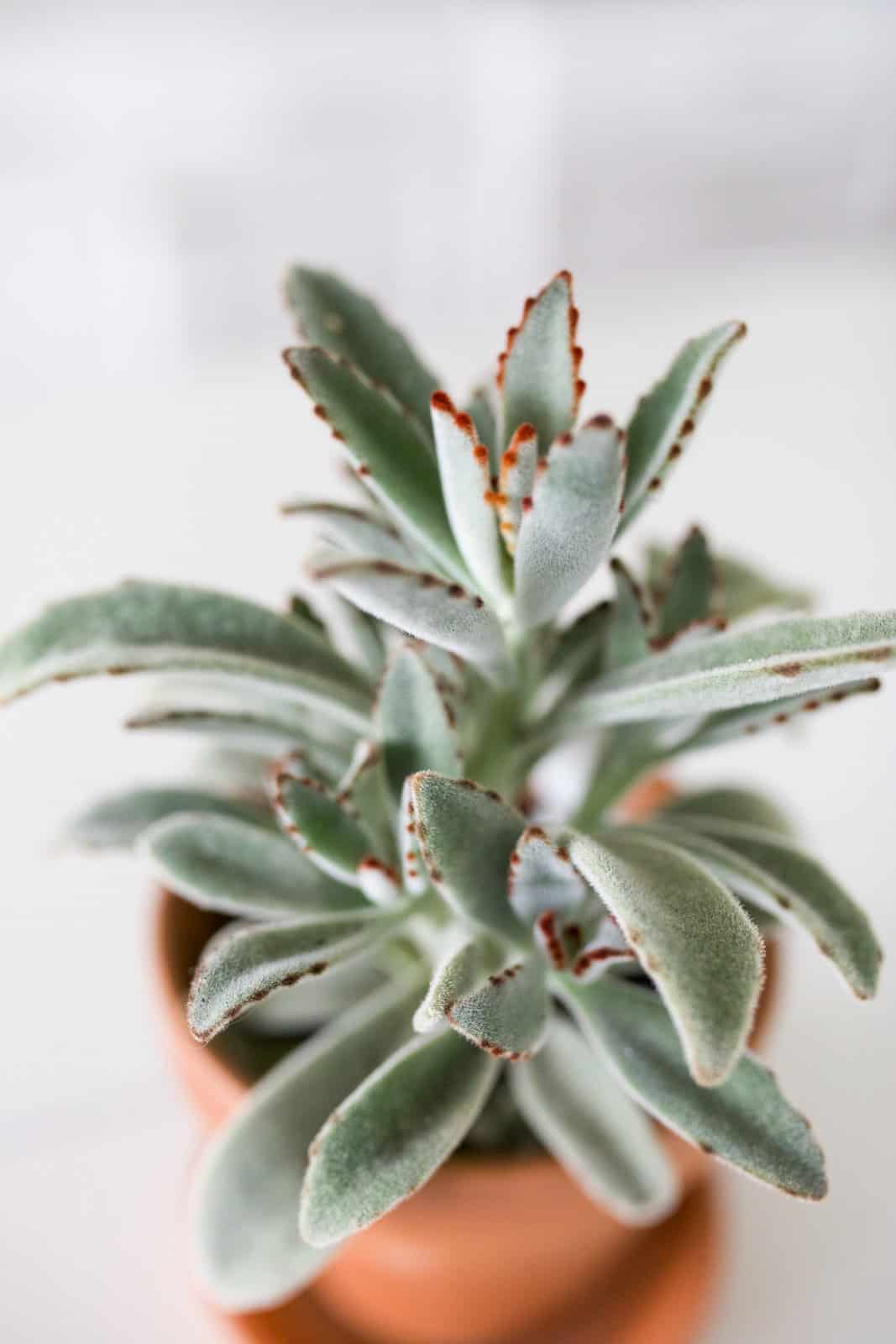
Yes, because it is a succulent, it does store water in the leaves for several days. You should only water it when the soil is dry to the touch to avoid overwatering.
This could be a result of a number of things. Too much direct sun can scorch the leaves, which may cause them to curl in defense. Not enough sunlight can lead to weak, curled foliage as they try to reach for more light. Not enough humidity can also cause them to curl inward.
If you need to clean your plant, you can use a soft bristled brush to do so. First be sure the brush is dry, then gently brush the leaves to remove any dust or dirt. Also, be careful to never put water directly on the leaves.
In Conclusion
So now after we have learned a bit about a cute little Panda Plant with its furry leaves, maybe it is something you are considering for your own collection. Since there are so many different kinds of them, it may take you a while to find just the perfect one. That’s okay! As always, keep on growing!
